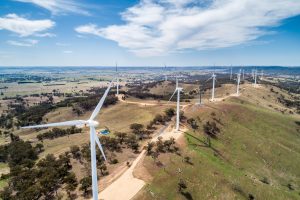The Trump administration’s retreat from U.S. climate policy poses an immediate geostrategic challenge for Australia: how to stay relevant to Southeast Asia as the region rapidly builds green supply chains. Southeast Asia’s transition to clean energy is inevitable, and Australia must either deepen its engagement or risk falling behind.
Southeast Asia is one of the world’s fastest-growing regions, expected to account for 25 percent of global energy demand by 2035, surpassing the European Union by mid-century. Heavily dependent on fossil fuel imports, the nations of the region have both economic and strategic incentives to transition to green energy. And they are increasingly turning to one partner to make this a reality: China.
China accounted for $818 billion of the $2.1 trillion invested in the global energy transition in 2024, according to BloombergNEF, much of which is going into Southeast Asia. These investments are building tariff-proof supply chains in Southeast Asia to produce the batteries, solar cells, wind turbines, and electric vehicles that will power the global economy in the decades ahead.
But the absence of environmental and social safeguards, or price signals to incentivize them, has created a number of problematic outcomes. In Indonesia, for instance, where Chinese investment has created a virtual monopoly on nickel processing, pricing out Australian and other processors, accompanying infrastructure has led to a proliferation of new coal plants, undermining Indonesia’s efforts to reduce its coal dependency.
These environmental and geostrategic issues motivated the Biden administration to support U.S. investments in Southeast Asia’s clean energy supply chains through the Inflation Reduction Act and multilateral initiatives like the Just Energy Transition Partnerships in Indonesia and Vietnam. Australia had hoped to prosper as part of this investment coalition with the U.S., Japan, and India through the quadrilateral strategic dialogue. However, the second Trump administration seems uninterested in supporting green industry in the region. In the absence of U.S. incentives, Australia must act quickly to secure its place in Southeast Asia’s green industrial transition.
Happily, Australia has a lot to offer the region. It is home to the world’s best wind and solar resources, and substantial deposits of key metals and minerals essential to the green economy. Australia’s universities can provide the skills and research necessary to speed the transition along. However, realizing this potential requires increased diplomatic effort to position Australia as a renewable superpower in the region.
To make this promise a reality, Australia must prioritize its trade and economic diplomacy. Working with key partners like Japan and South Korea, which also rely on fossil fuel exports, will be crucial. There is growing momentum toward a minilateral grouping with these partners, focused on green economy cooperation and investment, which should be encouraged. Strengthening bilateral ties with key manufacturing countries in the region and promoting clean economy cooperation, including through trade agreements, are essential. Additionally, Australia’s potential hosting of COP31 in 2026 could drive a new approach to energy transition cooperation in the region.
Australia should also work with Southeast Asian countries to enhance its value proposition for foreign investors, particularly in those clean energy supply chains where Australian firms could play a key role. At present, fossil fuel subsidies and stringent local content requirements throughout the region increase project risk and deter investment.
Australia has long been a trusted partner in the region, providing technical assistance that helped Southeast Asian countries recover from the Asian Financial Crisis. By increasing development assistance to support climate and energy policy reform, Australia can help improve the institutional frameworks needed for the green transition. Sharing the lessons learned from Australia’s own energy transition and building partnerships between Australian and regional institutions can de-risk foreign investment.
Australia faces a clear choice: seize the opportunity to join Southeast Asia’s green industrial revolution or remain sidelined as others shape the region’s economic future. The global energy transition is already underway, driven by economic forces that will outlast political shifts. By forging stronger regional partnerships, driving investment into clean supply chains, and positioning the nation as a trusted partner in Southeast Asia’s energy future, we can secure long-term prosperity and ongoing relevance to Australia’s dynamic neighbors.

































